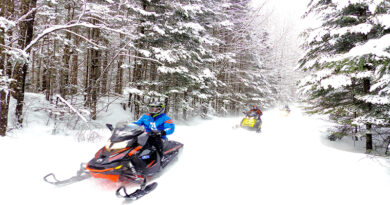Grass Lawns – The Not-So-Green Option
Before development came to your lake, chances are it looked quite different than it does now. Accommodating development likely required the removal of many trees, shrubs and other vegetation naturally surrounding the lake. Deep roots associated with such native vegetation helped to reduce the amount of runoff entering the lake, intercepting nutrients, sediment, pesticides, and other contaminants. They also helped protect against erosion by holding soil in place. In many instances, this native vegetation has been replaced with neatly manicured lawns and impervious surfaces. With its short root systems, grass lawns allow for more runoff to travel directly into your lake, carrying contaminants into the water. Grass also provides minimal protection against erosion. When it comes to your lake health, tidy lawns are a pain in the grass!
The result of seeing tidy lawns along lakefront shorelines is a lake environment which is not as healthy as it should be. Your once-pristine lake may now be prone to excessive plant growth and algal blooms. Suspended sediments may be causing the water to become cloudy, making it harder for fish to absorb oxygen and making prey less visible. When sediment accumulates on the bottom of the lake, it reduces important spawning and resting habitat and can smother insect larvae and fish eggs. A developed lake increases the chances of flooding during spring melts and storms. All of this is a consequence of taking a natural shoreline’s habitat and replacing it with a grass lawn.
The good news is that you can do something about it! By creating a shoreline buffer, you can help turn things around for your lake; the lake where you and your family like to swim, fish and play. A shoreline buffer is a strip of native trees, shrubs, grasses and perennials. If you leave a section of your lawn unmown near the shore your buffer will begin to grow naturally as seeds brought in by wind and wildlife take root and grow. Or perhaps you’ll want to design a buffer with native plants with certain colours and which attract pollinators? Whichever method you choose, your shoreline and lake will benefit.
You don’t have to get rid of your entire lawn. While any size buffer is better than none, it is recommended that a minimum buffer depth of 10 metres be maintained with an ideal depth of 30 metres. Before long you will notice an improvement in your lake’s water quality and see more birds, fish, butterflies and other wildlife.
If you have not already, you can make the change on your shoreline property. Small steps can lead to real change. For more information on how you can show your lake some love, visit LoveYourLake.ca. Love Your Lake is a shoreline naturalization program developed by the Canadian Wildlife Federation and Watersheds Canada.




